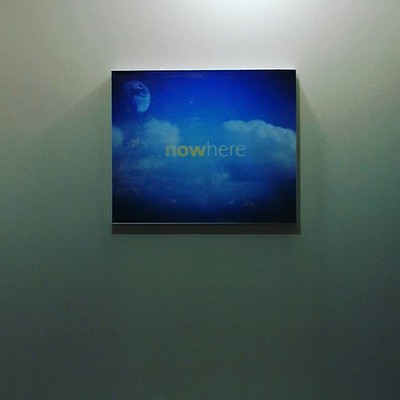Our lives are impacted by our decisions and the decisions of others, for better and worse, and humanity has this strange propensity to make things either/or when the dimmer switch has been around at least since 1959. We know that there’s more than 2 options for a light bulb, we have known for generations, but there is this cultural imperative to boiling things down to 2 choices.
If you see only 2 choices, you’re likely missing something. Even matter has at least three states we are taught of in basic physics and chemistry: Solid, Liquid, Gas.
One of the things I appreciated in the 1990s were thrift stores – books in particular, with knowledge on paper handed down from what I expect were dead people who did not throw away their books. I could walk into a thrift shop and use it as a used bookstore, where the books had been condensed into things that people found value in and so did not throw away. This, of course, was muddled by the books that were just donated to make space, but the good books to bad books ratio was pretty good, and it was a great way to get books cheap for someone like me. An intellectual omnivore.
Quite a few books changed my perspective on things, some because they had ideas worth adopting, and some had some antiquated ideas that formed the basis of modern ideas. Both had value. One of these books was “The Theory of Error” by Yardley Beers. A surprisingly slim book, it cost me all of 25 cents at the time, yet it gave me pause in dealing with calibrations, statistics, and everything else under the sun.
One of the major aspects of it was demonstrating something very simple that most people don’t consider: When there is a degree of accuracy, there is a degree of error. Understanding the nature of error and decreasing error is a powerful thing, the basis of which had me exploring fuzzy logic and bayesian probability for predictive things but also interpreting aspects of life. It was not Boolean (which oddly enough, accuracy and error are in an odd way), so there was room for more than 2 perspectives on anything.
As a then young software engineer that during formative years was obsessed with the idea of artificial intelligence, I found myself using these ideas where I could in code that wasn’t always understood by others but which worked. Some of it may still be working after some decades in what must now be an antiquated system that decided which medical transcriptionist to send a Doctor’s audio file to based on affinity and experience, weighted choices instead of the former ‘must match exactly’ choices.
What is hot for someone can be cold to someone else, what is warm for someone can be hot or cold for others. We live in an inexact world because what we as human beings process is subjective. I often wonder if this is why people have different favorite colors. Do certain colors appeal more to someone because of how they perceive it through senses? Maybe, maybe not, but we do know that we associate colors with things. We don’t really know, but we have some interesting guesses based on studies, statistics and… probability.
I bring up the favorite color because it’s a bias. And that bias demonstrates other biases, like the pseudoscience of racism, the idiocy of politics, and which brand one associates with a simple thing such as a hamburger. We are biased creatures, all of us, and we are often blind to our own biases.
The odds are good that by an accident of geography, you were born in one spot on the planet, with certain weather, with certain politics, with a certain predominant religion, with a culture, tradition and the bureaucracy that comes with them. When we encounter others who are different, they are the ‘thems’, and we are the ‘us’es. Are we open to others? That can have a lot to do with the red dots of life, too, where we are influenced by someone else’s laser pointers, and underlying it all is a stack of stuff we think we need to accomplish so that we have some purpose or worth.
It’s worth reflecting, every now and then, on this stuff because simply recognizing we are biased and allowing that our biases can be wrong can have impacts not just on ourselves and those around us, but in allowing that other’s biases impact them when they are dealing with you.
It’s a weird soup of reality we all share. Now that we’re so much more connected, we have gotten into our little tribes that throw rocks at each other and never find the commonalities as endearing, perhaps because we like our biases too much, guarding them against everything so that we can live a simpler life.
Sometimes we simplify too much, sometimes too little, and it’s in this grey soup of bias we see the worst and best of humanity. And now we’re seeing output from different things accused of being artificial intelligence reflecting those biases in interesting ways.
This could be an opportunity. The choice is somewhere between “Now Here” and “Nowhere”.

